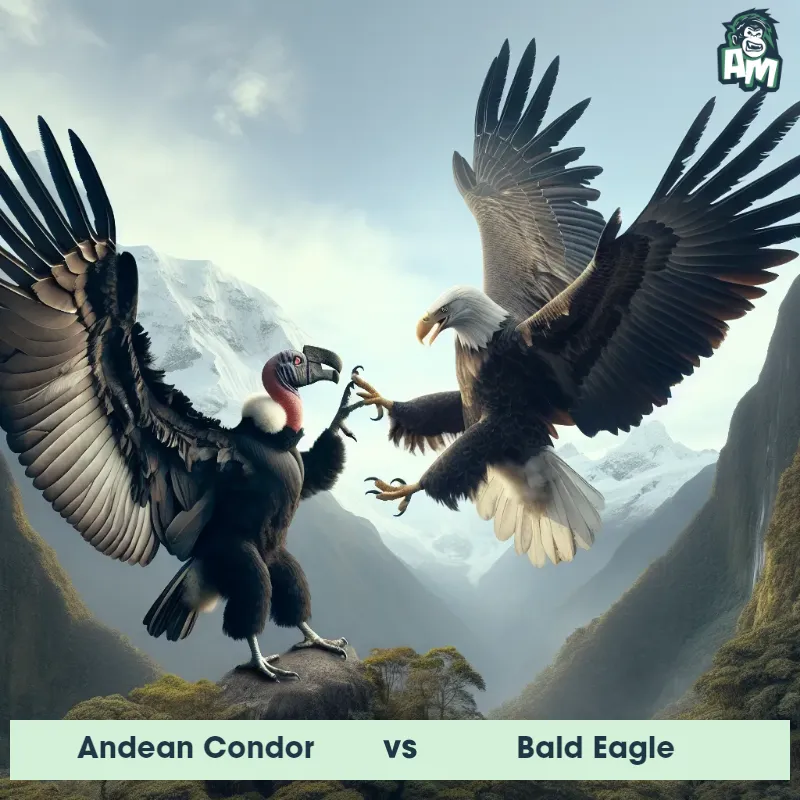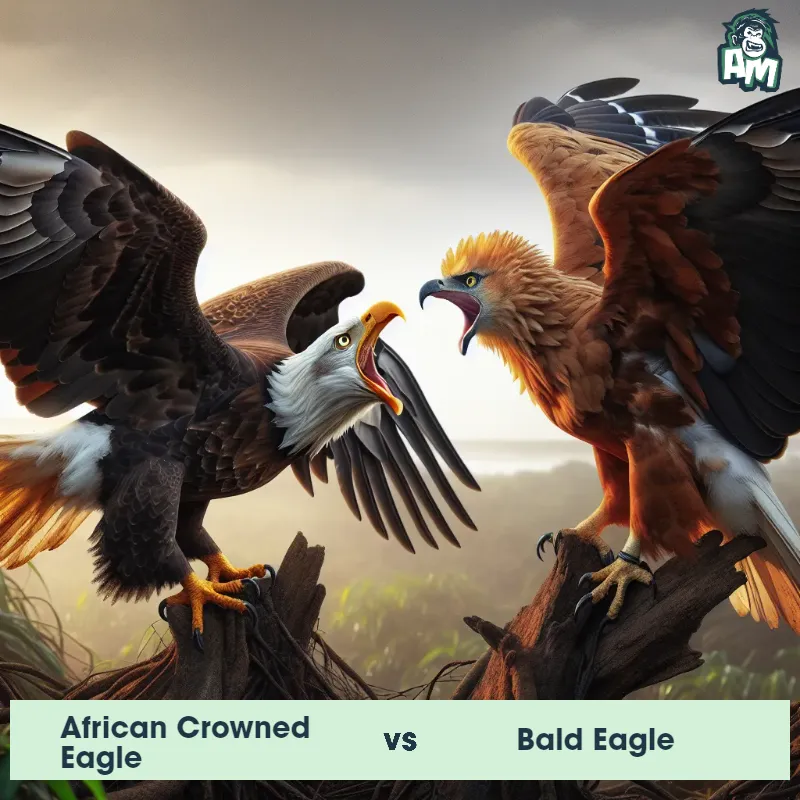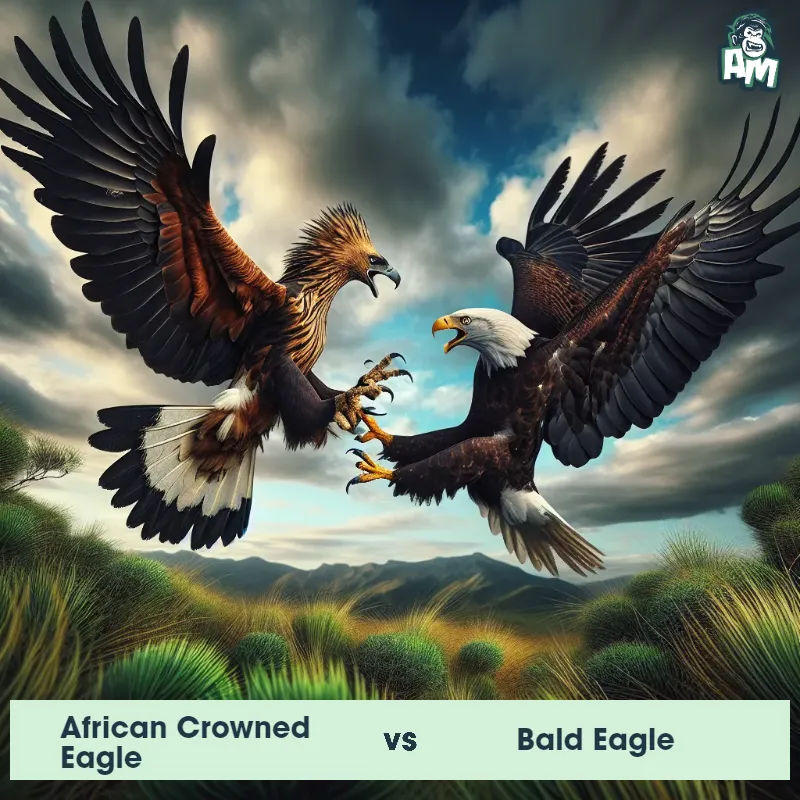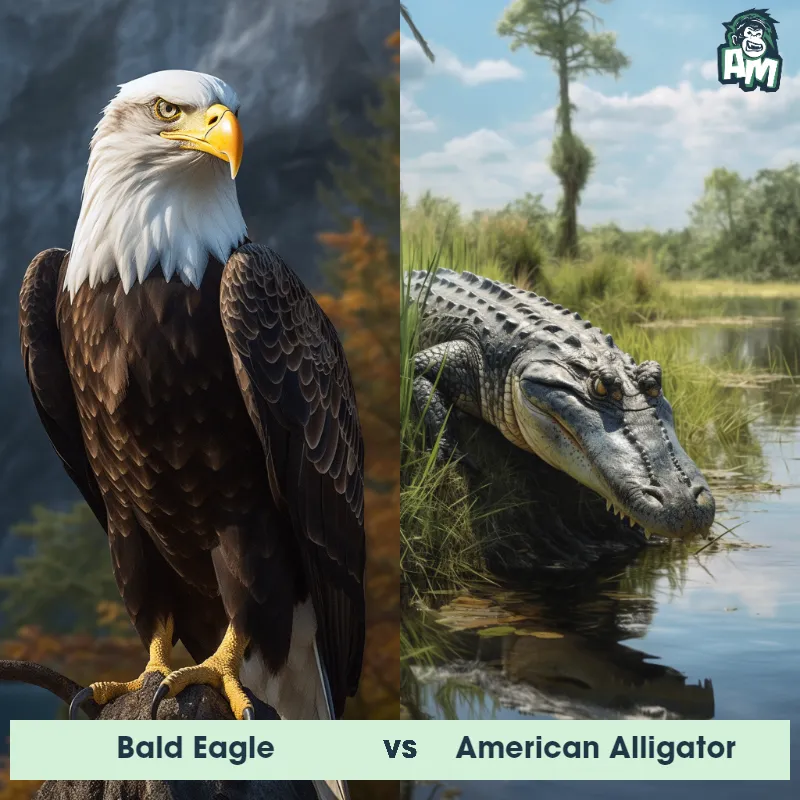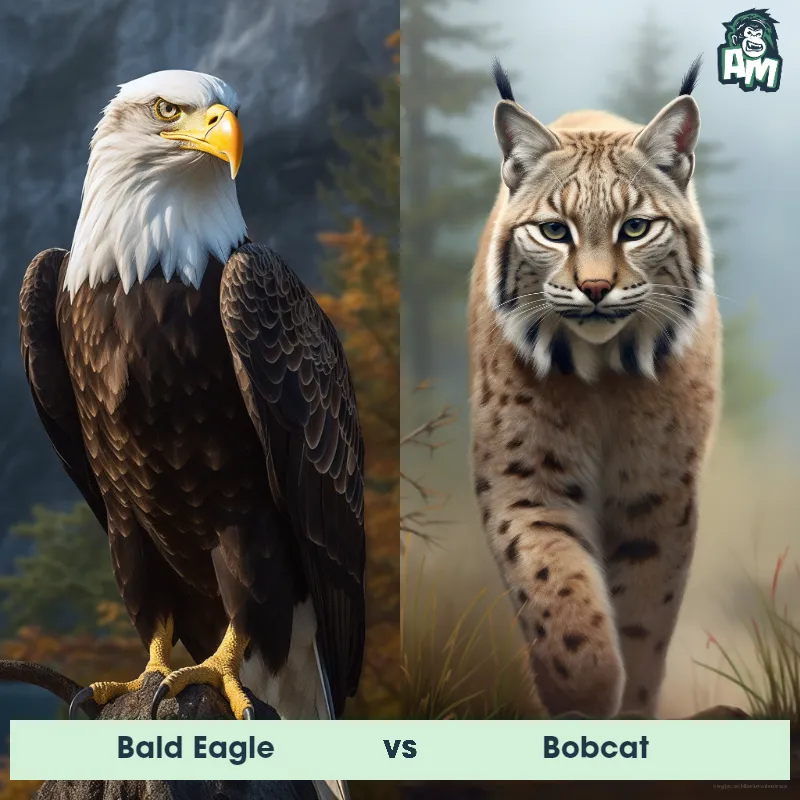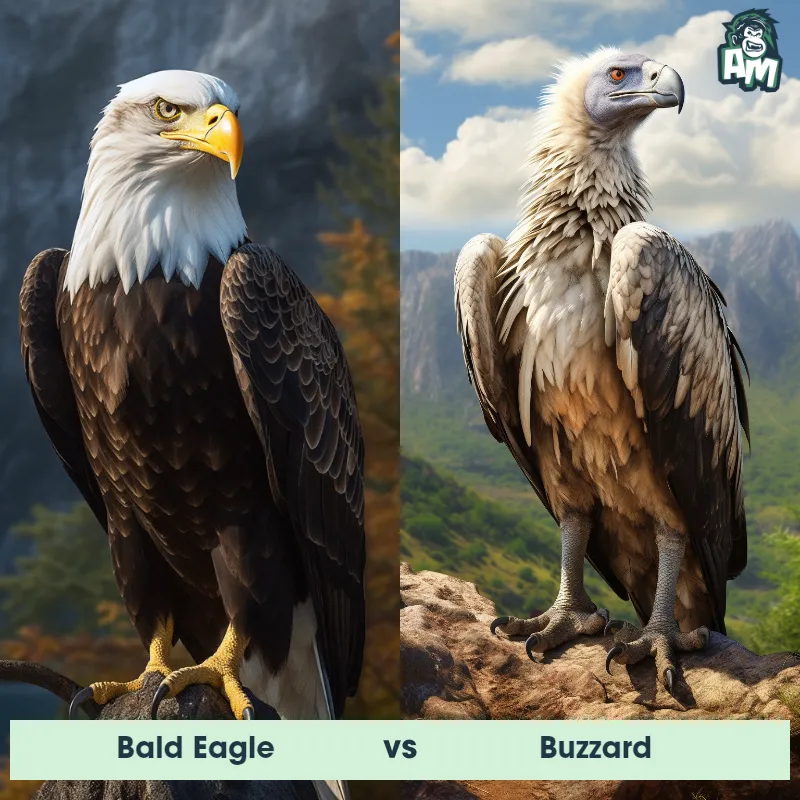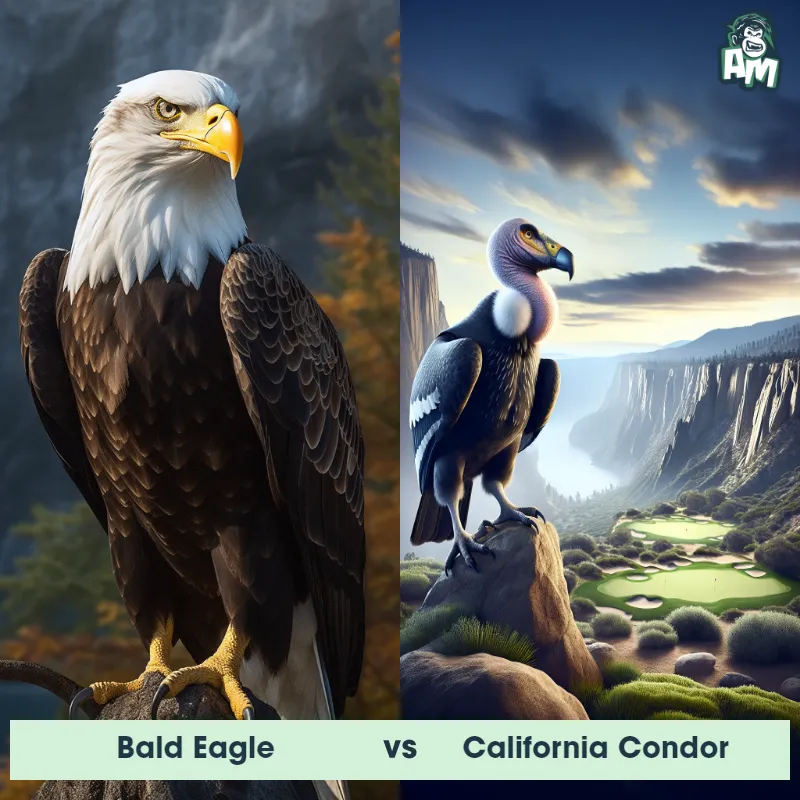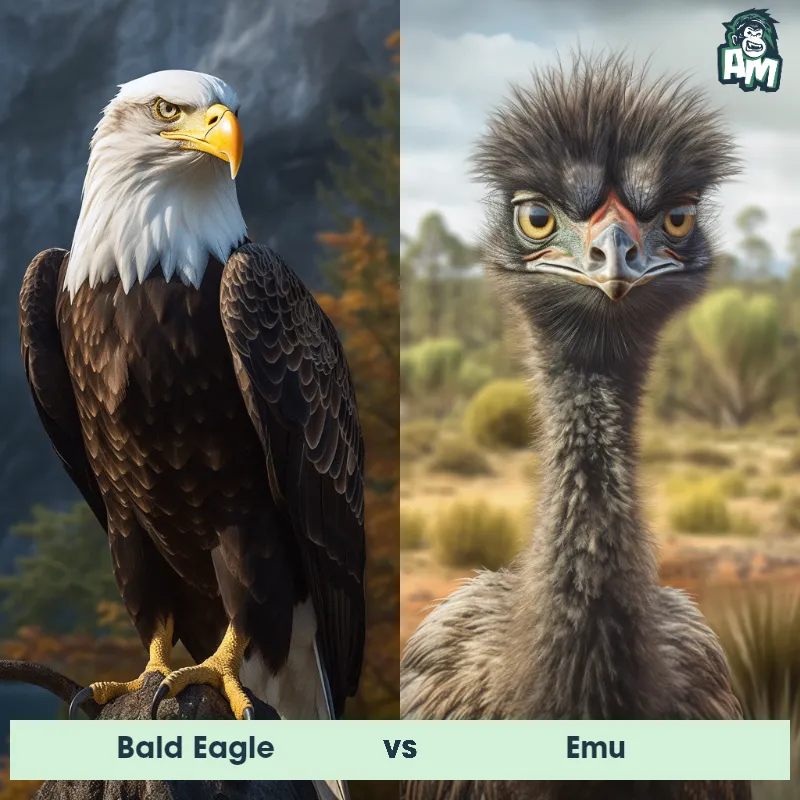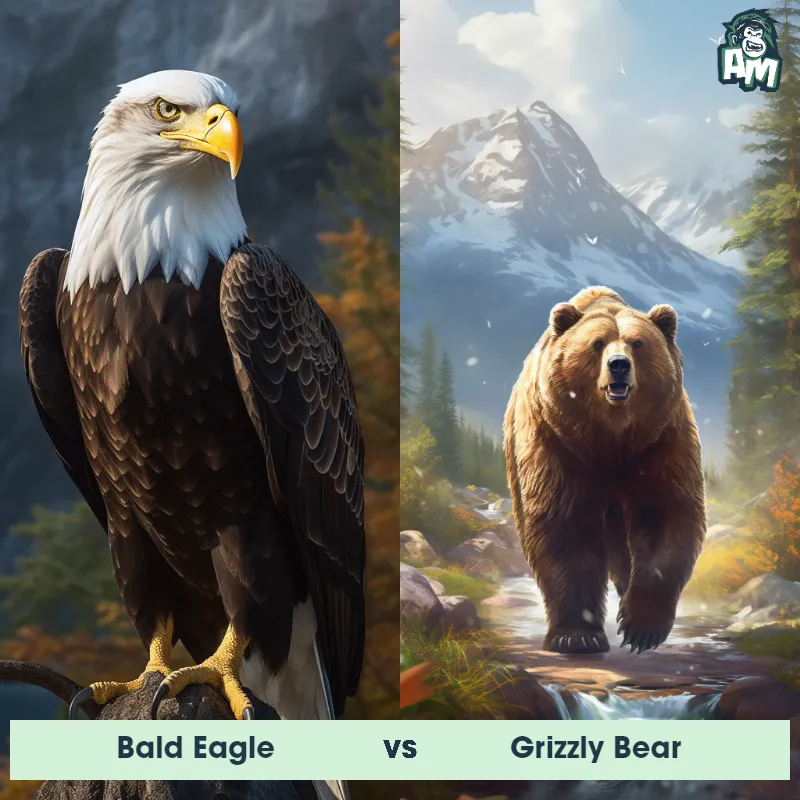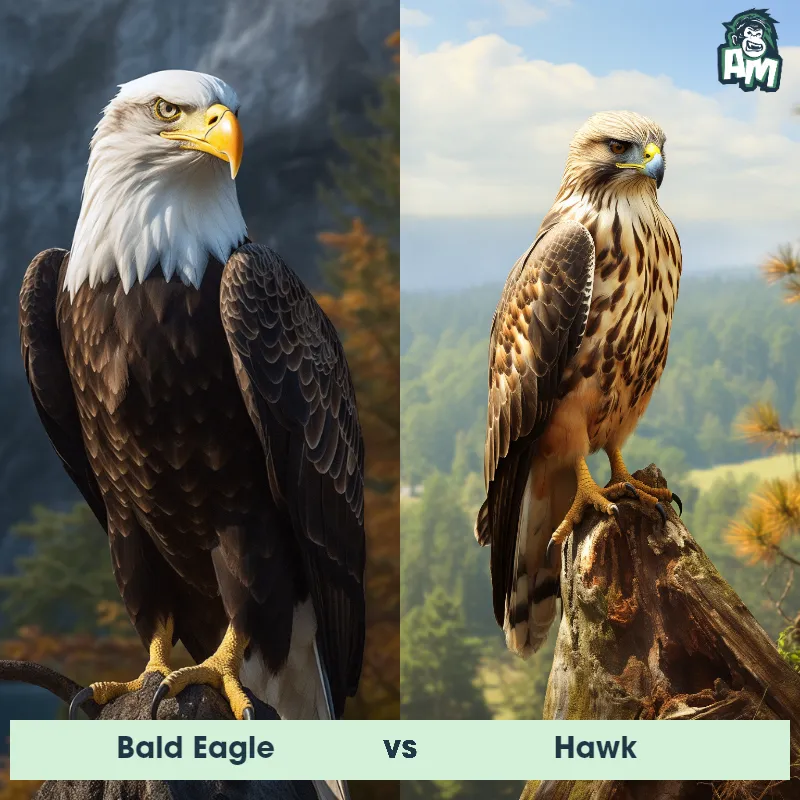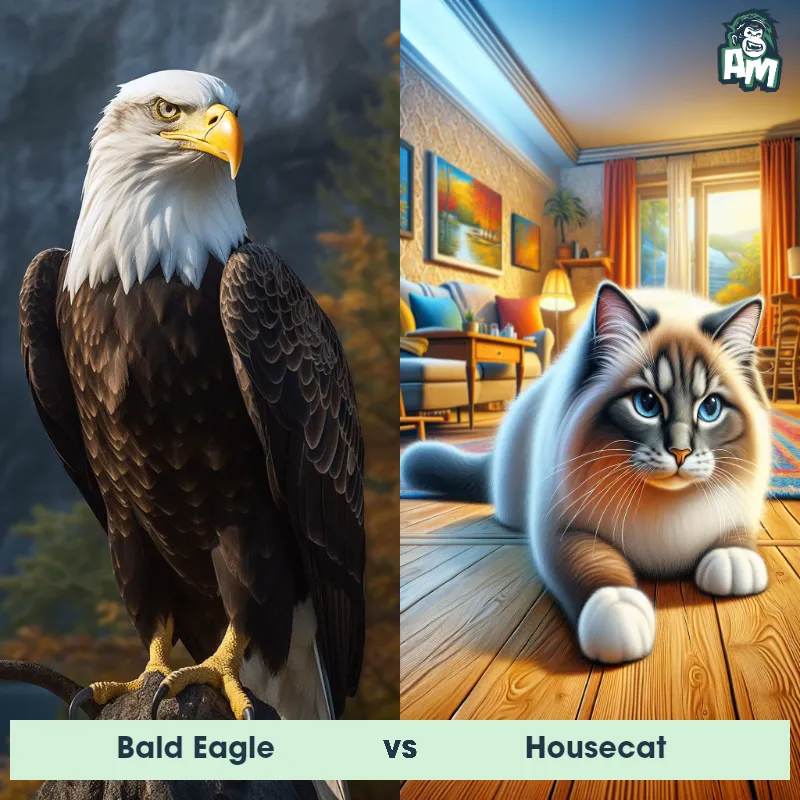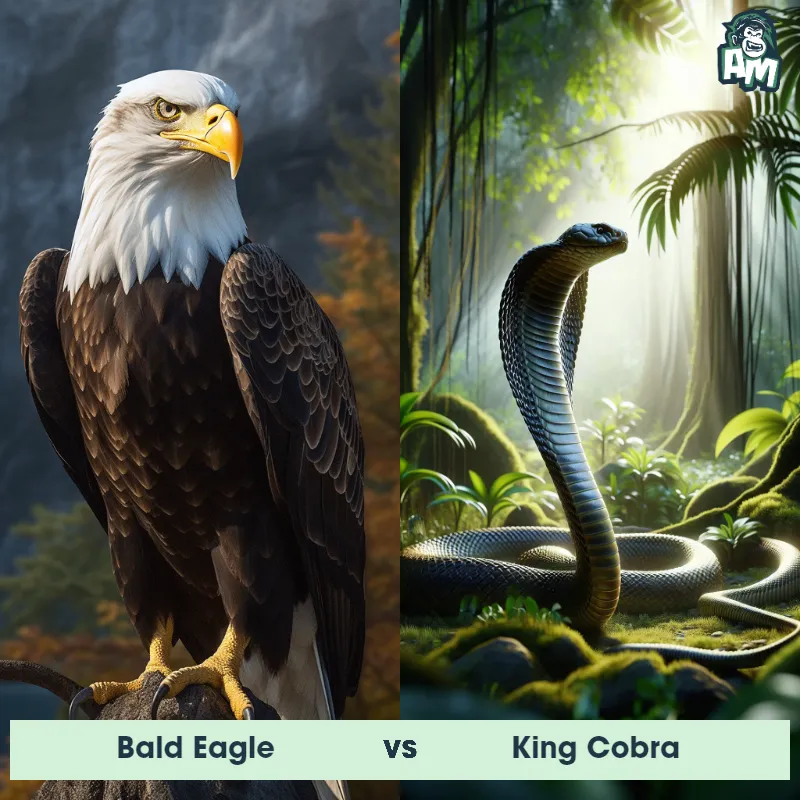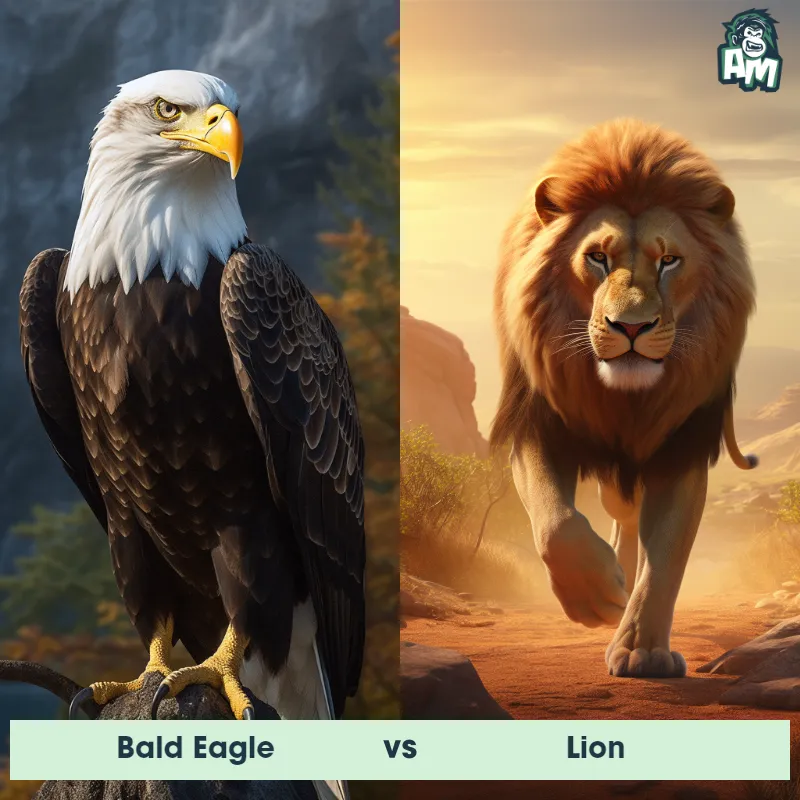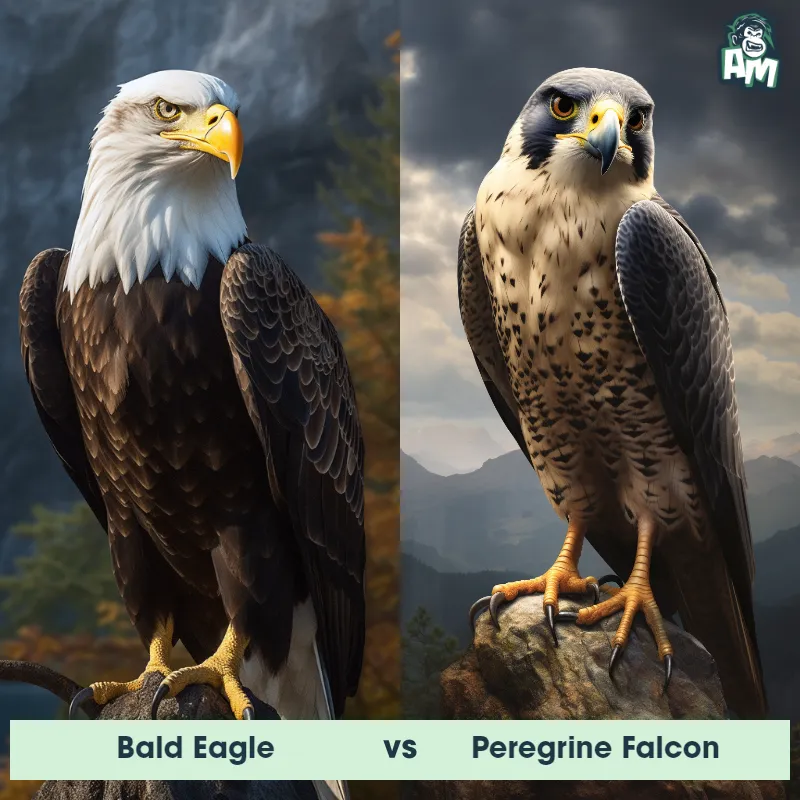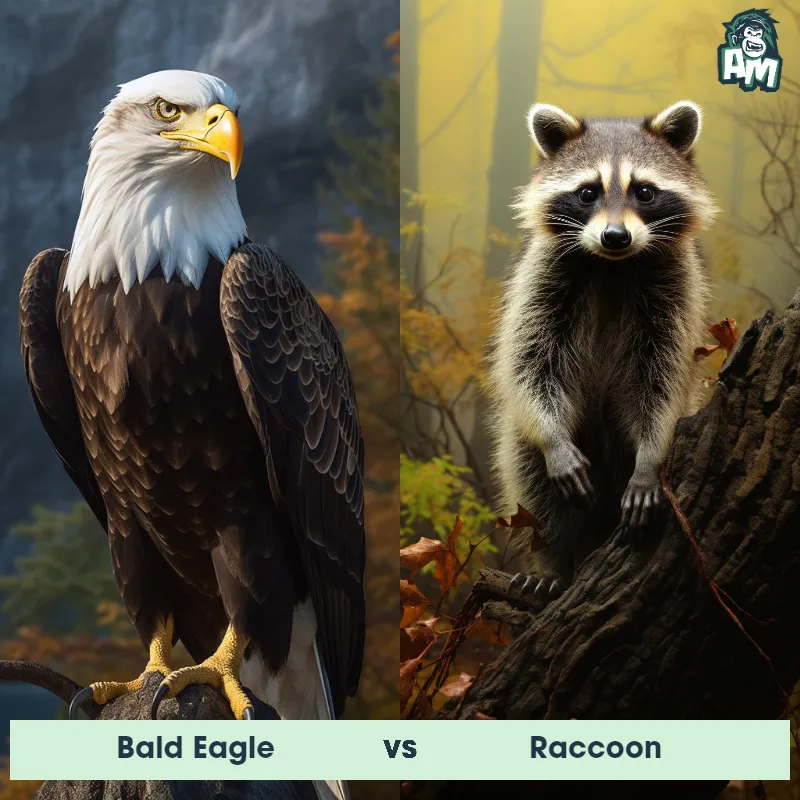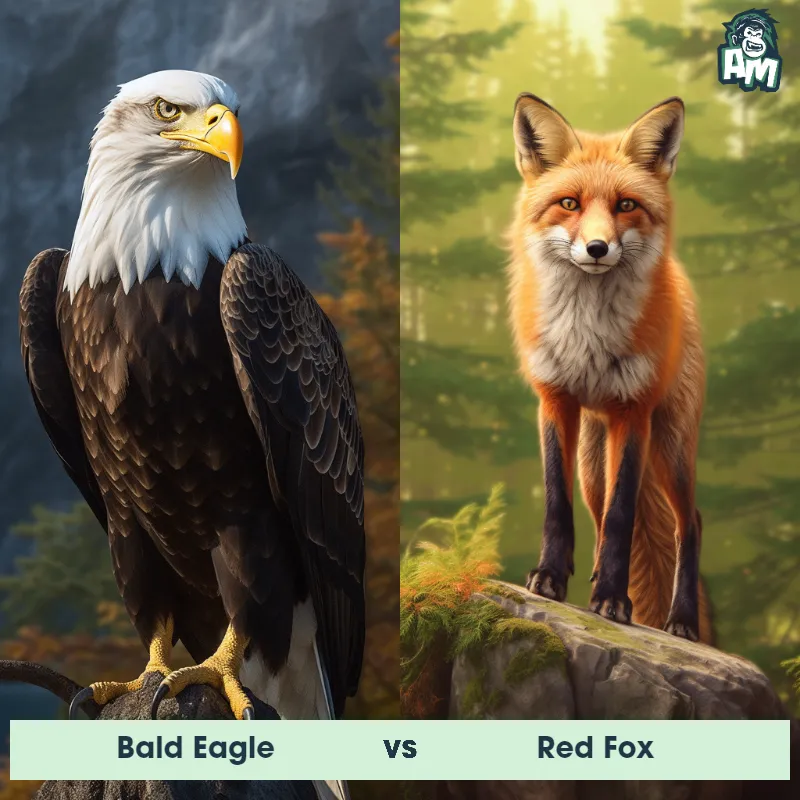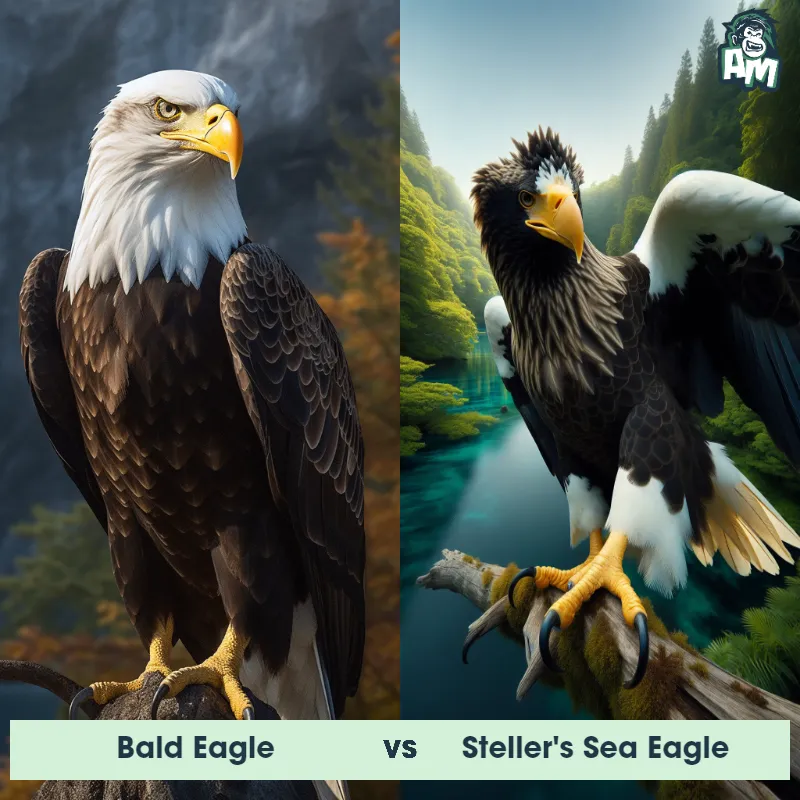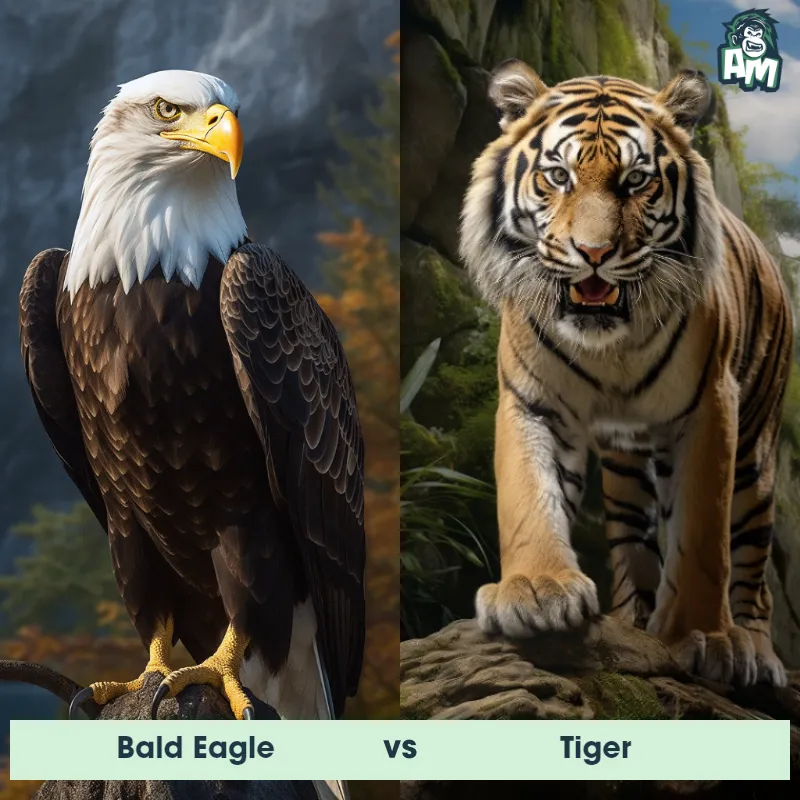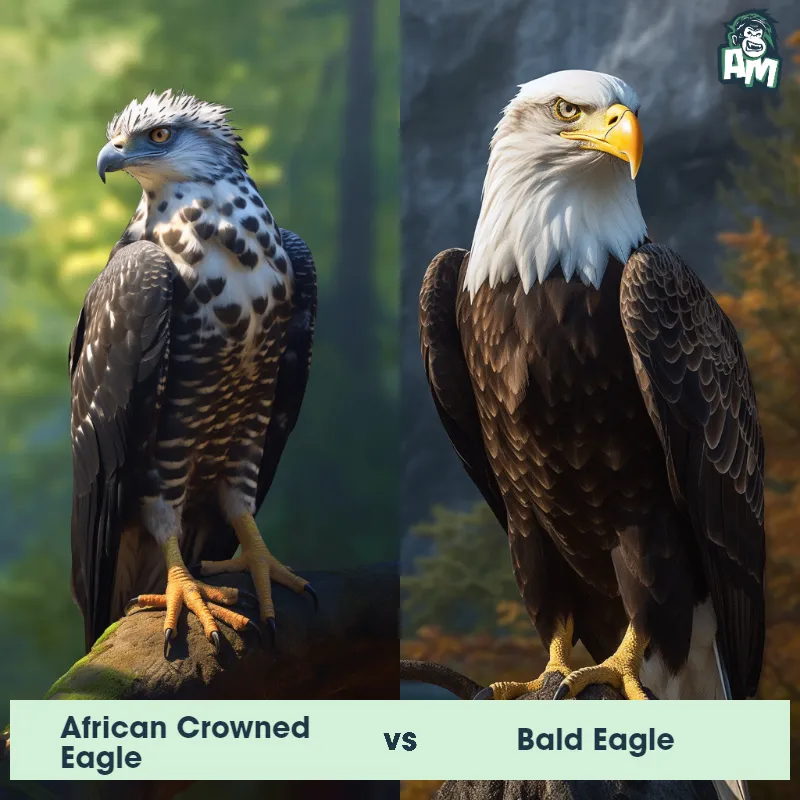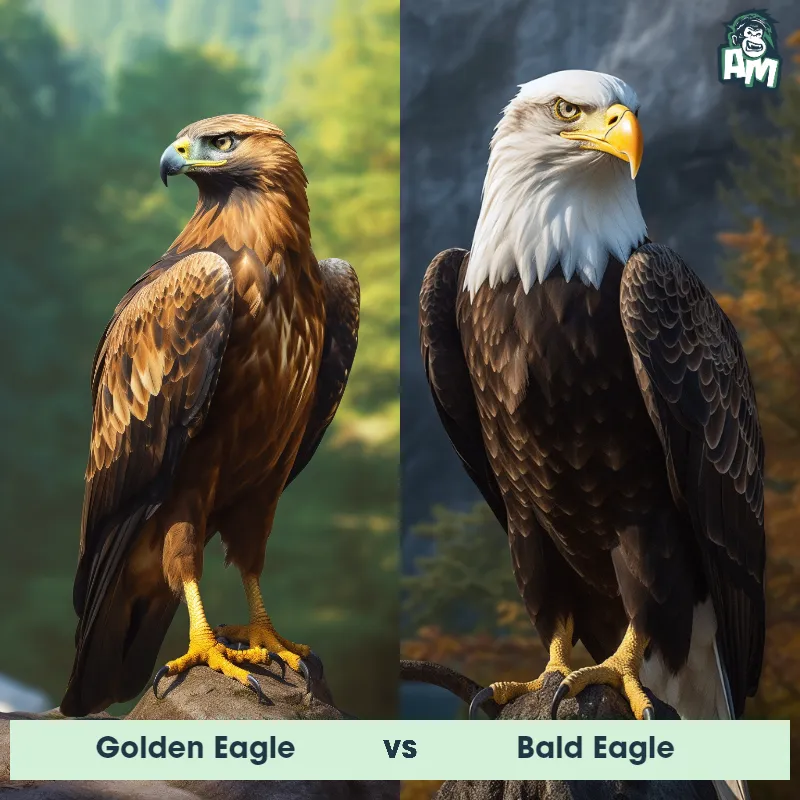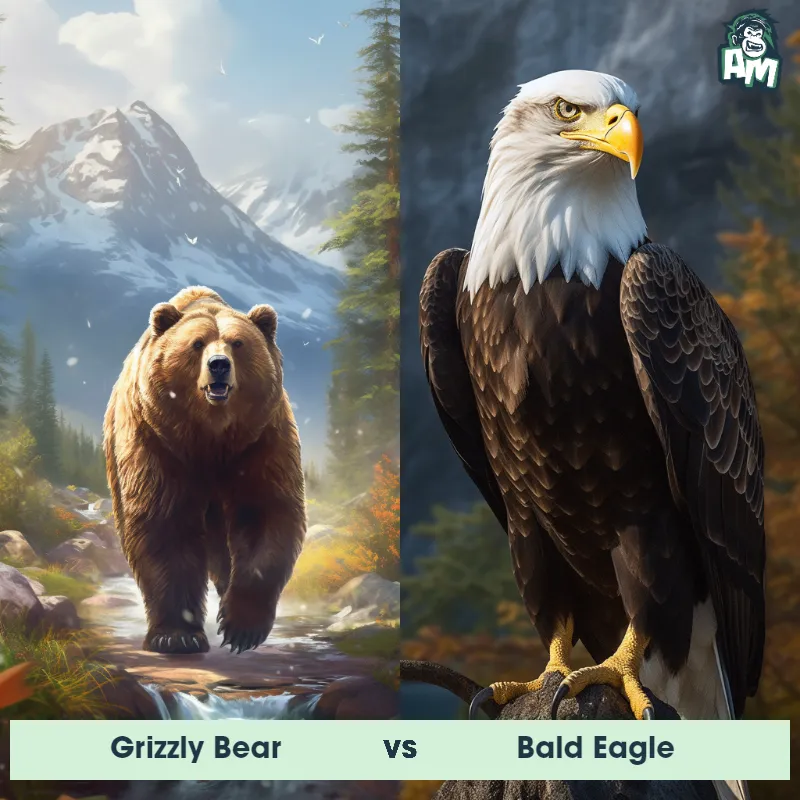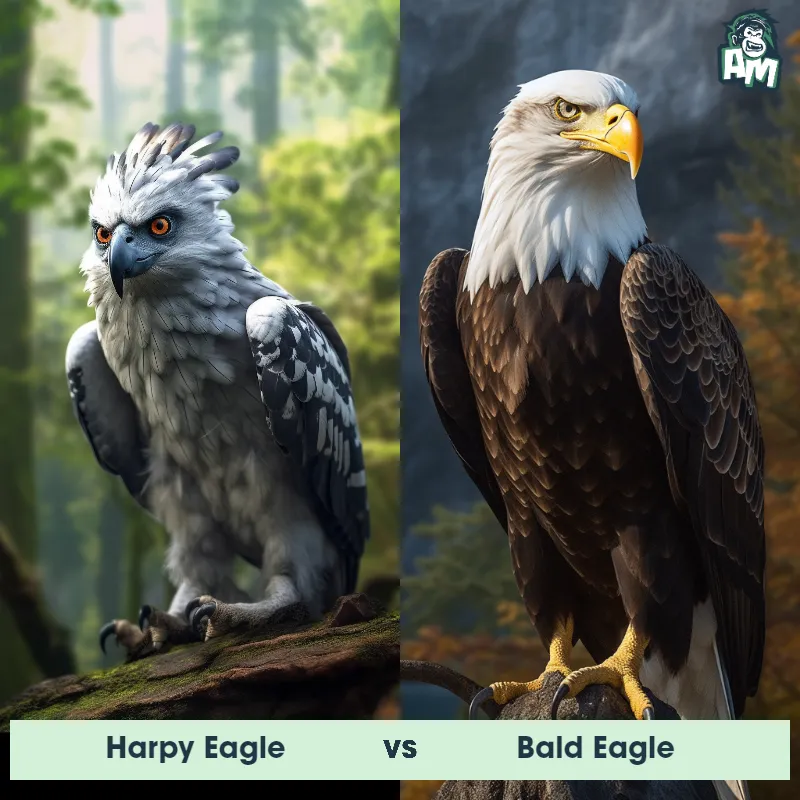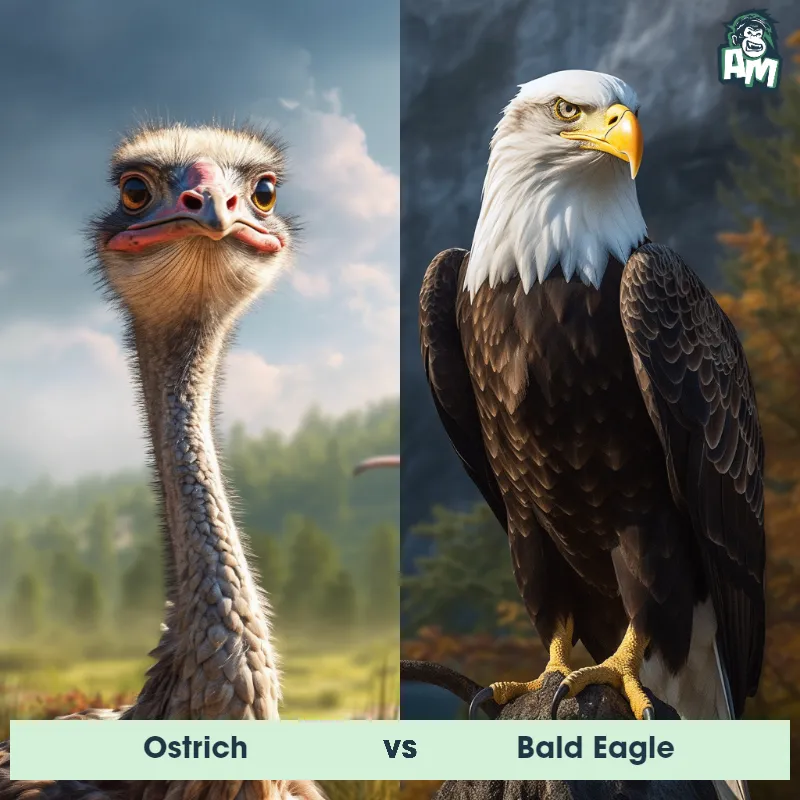The Bald Eagle
The Bald Eagle, also known as Haliaeetus leucocephalus, is a bird of prey commonly found in North America. This majestic raptor is easily recognizable due to its striking white head and tail feathers contrasting with its dark brown body. With a wingspan reaching up to 7 feet, it is one of the largest birds of prey in the world. The Bald Eagle is highly skilled at catching and consuming fish, which constitutes the majority of its diet. Its sharp hooked beak and powerful talons allow it to efficiently hunt its prey. This bird's impressive plumage and regal presence make it a symbol of strength and freedom.
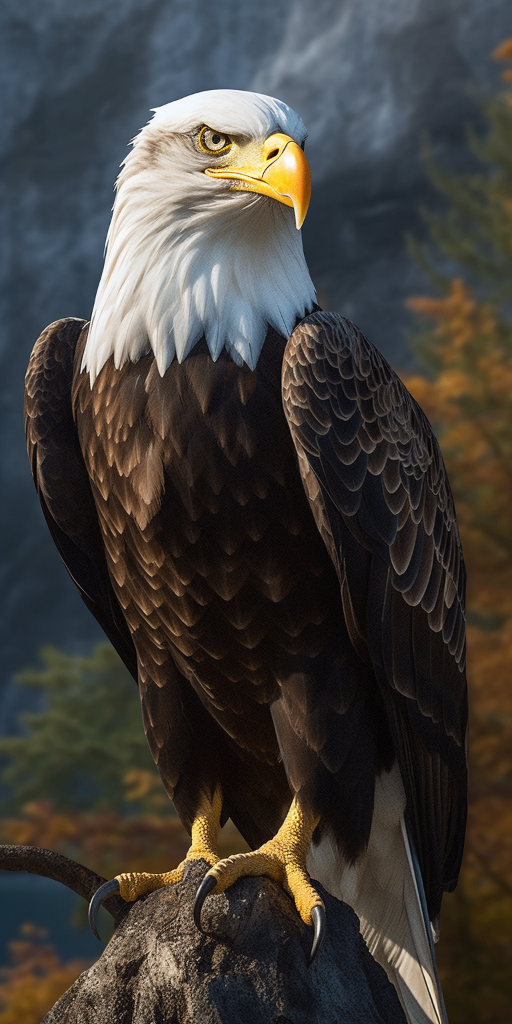
| Bald Eagle | |
|---|---|
| Size | Up to 3 feet (91 cm) in height and 7 feet (213 cm) in wingspan. Metric: Up to 91 cm in height and 213 cm in wingspan |
| Weight | Up to 14 pounds (6.4 kg). Metric: Up to 6.4 kg |
| Speed | Speed: 120 mph (193 km/hr) |
| Key Strength | Sharp talons and powerful beak |
| Biggest Weakness | Vulnerable to larger predators such as bears and cougars |
| Scientific Name | Haliaeetus leucocephalus |
| Family | Accipitridae |
| Habitat | Near water bodies such as lakes, rivers, and coasts |
| Geography | North America |
| Diet | Fish, small mammals, and birds |
| Lifespan | 20 years - 30 years |

The Bald Eagle
The Bald Eagle, also known as Haliaeetus leucocephalus, is a bird of prey commonly found in North America. This majestic raptor is easily recognizable due to its striking white head and tail feathers contrasting with its dark brown body. With a wingspan reaching up to 7 feet, it is one of the largest birds of prey in the world. The Bald Eagle is highly skilled at catching and consuming fish, which constitutes the majority of its diet. Its sharp hooked beak and powerful talons allow it to efficiently hunt its prey. This bird's impressive plumage and regal presence make it a symbol of strength and freedom.
Fun Fact: The Bald Eagle has an incredible eyesight, which allows it to spot a fish from hundreds of feet above the water's surface, enabling it to swoop down with precision and accuracy to catch its prey.
| Bald Eagle | |
|---|---|
| Size | Up to 3 feet (91 cm) in height and 7 feet (213 cm) in wingspan. Metric: Up to 91 cm in height and 213 cm in wingspan |
| Weight | Up to 14 pounds (6.4 kg). Metric: Up to 6.4 kg |
| Speed | Speed: 120 mph (193 km/hr) |
| Key Strength | Sharp talons and powerful beak |
| Biggest Weakness | Vulnerable to larger predators such as bears and cougars |
| Scientific Name | Haliaeetus leucocephalus |
| Family | Accipitridae |
| Habitat | Near water bodies such as lakes, rivers, and coasts |
| Geography | North America |
| Diet | Fish, small mammals, and birds |
| Lifespan | 20 years - 30 years |
Match Highlights
Bald Eagle Matchups
We use AI to simulate matchups between the Bald Eagle and other animals. Our simulation considers size, strength, and natural predatory behaviors to determine the most likely outcome.
Bald Eagle: Diet, Predators, Aggression, and Defensive Behaviors
What do Bald Eagles eat?
Bald Eagles are opportunistic hunters and primarily feed on fish, especially near water bodies. They also consume small mammals, birds, and carrion. Their diet can vary depending on availability, but fish make up a significant portion of their food source.
Do Bald Eagles have any predators?
While adult Bald Eagles do not have many natural predators due to their large size and powerful talons, their eggs and young are vulnerable to predators such as raccoons, owls, and other large birds of prey. However, human activities like pollution, habitat destruction, and hunting pose a greater threat to their population.
Are Bald Eagles aggressive?
Bald Eagles are known to be territorial and can exhibit aggressive behavior towards other birds, especially when defending their nesting territory. They may also display aggression during mating rituals or when competing for food.
Do Bald Eagles fight?
Bald Eagles are known to engage in aerial skirmishes with other eagles, particularly during the breeding season or when defending their territory. These fights can involve high-speed chases, talon grappling, and loud vocalizations.
How do Bald Eagles defend themselves?
Bald Eagles have several defense mechanisms to protect themselves, including their powerful talons, sharp beak, and impressive wingspan. They can use these weapons to ward off potential predators or intruders, as well as to assert dominance in competition with other eagles.
What is the biggest weakness of Bald Eagles in a fight?
Despite their size and strength, Bald Eagles can be vulnerable to attacks from larger predators such as bears or cougars when on the ground or away from their nest. They are most effective in defending themselves in the air, where they can rely on their impressive aerial agility and hunting skills.
Fun Fact: Contrary to its name, the Bald Eagle is not actually bald. The word "bald" derives from the Old English term "balde," meaning white. The Bald Eagle's head and tail feathers are white, giving it the appearance of being bald when observed from a distance.
Fun Fact: Bald Eagles are known for their courtship displays, characterized by intricate aerial acrobatics. During these displays, the eagles engage in spectacular synchronized flights, locking talons while soaring through the sky, and eventually descending towards the ground. This elaborate dance is a key part of bond formation between mating pairs and is often repeated yearly to strengthen their partnership.





